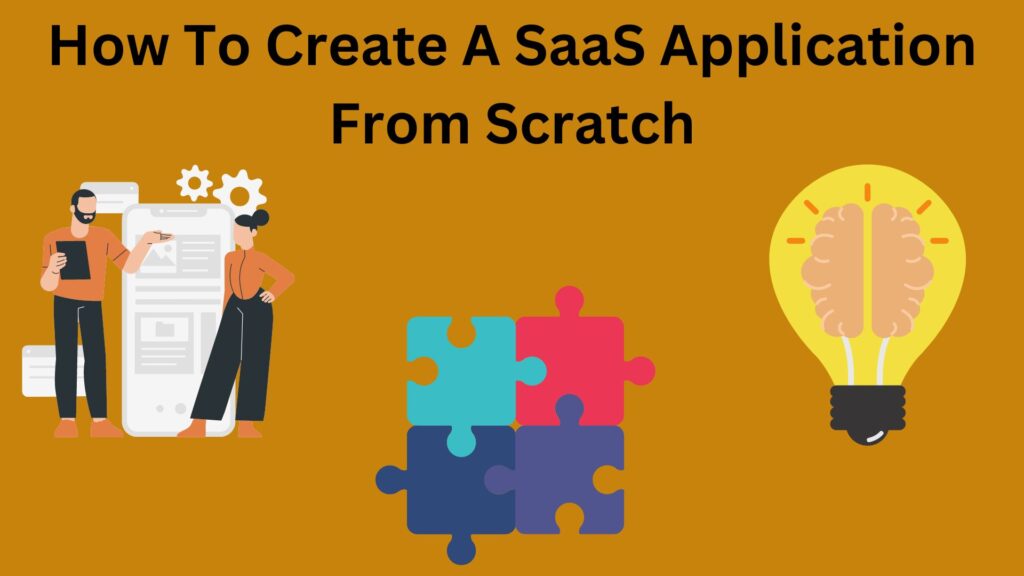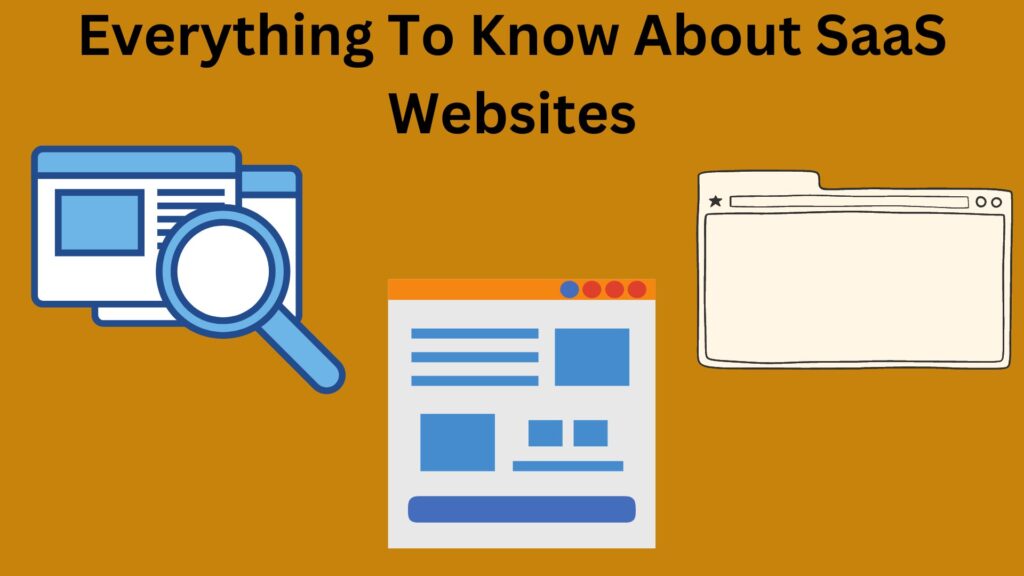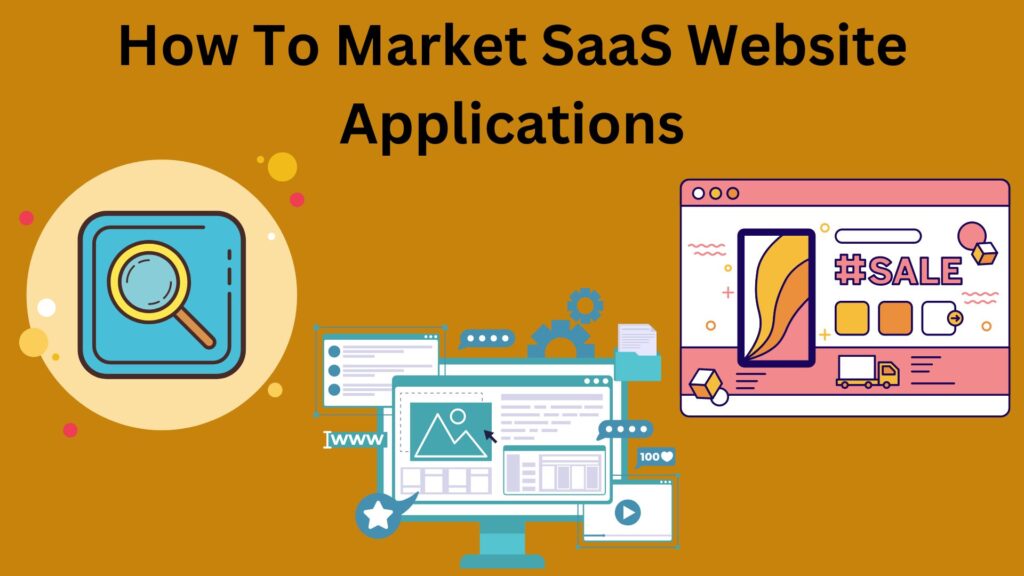Welcome to our blog post titled “What Do I Need to Create a SaaS Application?” If you’re reading this, you might be thinking about developing a Software as a Service (SaaS) application, or you might just want to learn more about the process. In any case, we intend to give you a thorough understanding of what it takes to construct a successful SaaS service.
Before getting into the details, it’s critical to understand what SaaS is and how it differs from other types of software. Users of SaaS access the software using a web browser. This means that most SaaS systems are subscription-based, with customers paying a monthly or annual price to access the program.
Now that you have a basic understanding of SaaS, let’s look at some of the main factors to consider when developing a SaaS application.
- Define your target market: Who will use your SaaS application, and how will it help them solve an issue or meet a need? Understanding your target market is critical to developing a successful product.
- Develop a business plan: A comprehensive business plan can assist you in defining your goals, understanding your competition, and identifying the resources required to bring your SaaS product to market.
- Choose your technology stack: The collection of programming languages, frameworks, and tools you’ll employ to construct your SaaS application is referred to as your technological stack. Choosing the appropriate technology stack is critical to the success of your application.
- Build and test your MVP: A minimum viable product (MVP) is a version of your SaaS service that only includes the most important functionalities. Creating and testing an MVP allows you to collect feedback and make necessary changes before releasing your whole product.
- Establish a pricing model: Choosing how to charge for your SaaS application is a critical step in the process. Will you provide a free trial, freemium model, or subscription-based pricing?
- Launch and promote your product: Once your SaaS application has been designed and tested, it is time to take it to market. This will entail marketing your product to your target audience and iterating and improving based on client input.
We hope this overview has given you a fair understanding of the process of developing a SaaS application. Let’s take a closer look at each of these processes!
Steps To Create A SaaS Application
Define Your Target Market
Defining your target market is a critical stage in developing a SaaS application. The set of individuals or organizations that will use your software is known as your target market, and understanding their needs and preferences is critical for developing a solution that satisfies their needs.
Consider the following elements while defining your target market:
- The problem or need that your SaaS application will solve: What problem will your program solve? How will it make your target customers’ lives easier or more efficient?
- The characteristics of your ideal customer: Who will gain the most from your software? Consider their industry, work function, region, age, and other pertinent demographic information.
- The competition: Who else is providing solutions to the problem that your SaaS application is addressing? What makes your product unique in comparison to the competition?
Defining your target market will assist you in developing a product that meets the specific demands of your clients, as well as inform your marketing and sales activities. You’ll be able to customize your messaging and marketing methods to reach the correct people and persuade them to use your software if you understand your target market.
Develop A Business Plan
Creating a business plan is a critical stage in the process of developing a SaaS product. A business plan is a document that defines a company’s goals, and strategy, and predicts financials. It is a road map that directs the company’s development and progress.
A business strategy will assist you in defining your application’s aims and objectives. This could include items like the application’s target market, the problem it will solve, and the value it will bring to users.
A business plan can also assist you in comprehending your competition. This includes investigating and recognizing the benefits and shortcomings of other SaaS services in the same market. This data can be utilized to distinguish your application and position it as a distinct and useful solution.
Finally, a business plan can assist you in determining the resources required to bring your SaaS service to market. Funding, team members, marketing resources, and technical resources are examples of such resources. You’ll be better prepared to launch and scale your application if you identify these resources ahead of time.
Overall, building a business plan is an important step in the process of developing a SaaS service since it allows you to define your goals, evaluate your competition, and identify the resources you’ll need to bring your application to market.
Choose Your Technology Stack
Choosing the correct technology stack is a critical step in developing a SaaS application. The collection of programming languages, frameworks, and tools that you will use to construct and manage your application is referred to as your technology stack.
The correct technological stack is critical for the success of your application because it determines its performance, scalability, and maintainability. When choosing your technology stack, consider aspects such as the application’s complexity, the target audience, the development team’s skill set, and the hosting environment.
There are numerous technological stacks to pick from, and the best one for your SaaS application will be determined by your individual requirements and ambitions. The LAMP stack (Linux, Apache, MySQL, PHP), the MEAN stack (MongoDB, Express.js, Angular.js, Node.js), and the Ruby on Rails stack are some common technology stacks for SaaS applications.
Before making a selection, it is critical to thoroughly explore and evaluate your options, since selecting the incorrect technology stack can have substantial ramifications in terms of development time, cost, and the overall success of your application.
Overall, selecting the correct technology stack is a critical stage in the process of developing a SaaS service because it determines the program’s performance, scalability, and maintainability. Before making a decision, it is critical to thoroughly investigate and examine your options.
Build And Test Your MVP
Creating and testing a minimum viable product (MVP) is a critical step in the process of developing a SaaS application. An MVP is a version of your application that simply covers the most important features and is intended to assess the viability of your product.
Creating and testing an MVP allows you to collect feedback and make necessary changes before releasing your whole product. This can be a useful technique to evaluate your market assumptions, uncover any faults or problems with your product, and make any necessary modifications before spending substantial time and resources on the full product.
To create and test an MVP, you must first identify and prioritize the most important aspects of your product based on their value to the overall product vision. You’ll then need to construct and test these features, gathering input and making adjustments with techniques like user testing and A/B testing.
Overall, developing and testing an MVP is a vital phase in the process of developing a SaaS application since it allows you to receive feedback and make necessary changes before releasing your whole product. This can be a useful technique to validate your market assumptions and discover any flaws or problems with your product.
Establish A Pricing Model
Creating a pricing model is a key stage in the process of developing a SaaS product. A pricing model is how you will charge for your application, and it will have a huge impact on your income and company performance.
There are numerous price models for your SaaS application to consider, including:
- Free trial: A free trial allows people to test your application for a limited time without having to pay. This can be an effective strategy to attract new consumers while also demonstrating the worth of your product.
- Freemium: A freemium model provides a free basic version of your program with the option to upgrade to a paid version with more capabilities. This can be an effective method of attracting a huge user base and monetizing through upgrades.
- Subscription-based pricing: Subscription-based pricing structures charge consumers a recurring fee on a regular basis (e.g., monthly or annually) in exchange for access to your application. This can be a good strategy to produce consistent income.
It is critical to carefully analyze the pricing plan that would work best for your SaaS application, taking into account elements such as the value that your application delivers, market rivalry, and your target audience.
Overall, developing a pricing model is a critical phase in the process of developing a SaaS service because it will have a substantial impact on your income and the company’s success. It is critical to carefully analyze the pricing model that will work best for your application, taking into account aspects such as the value that your application delivers, market rivalry, and your target audience.
Launch And Promote Your Product
Once your SaaS application has been designed and tested, it is time to take it to market and begin generating cash. Launching and advertising your product is a critical step in the process, and it will entail a variety of actions.
You’ll need to do the following to launch and advertise your product:
- Identify your target audience: Knowing who your product is intended for can help you promote it to the proper individuals.
- Develop a marketing plan: A marketing plan specifies the strategies and methods you will employ to reach and engage your target audience. Social media marketing, content marketing, email marketing, and paid advertising are all examples of this.
- Launch your product: Once you’ve created your marketing strategy, it’s time to put it into action. This could include releasing it on a specified date or gradually rolling it out to a select number of consumers.
- Promote your product: Once your product is live, you need to keep promoting it to your target audience. This may entail developing promotional materials, attending meetings and conferences, or organizing sponsored advertising efforts.
- Iterate and improve based on customer feedback: As you begin to receive feedback from customers, it is critical that you use this information to iterate and develop your product. This could include changing the product itself or tweaking your marketing efforts based on what works and what doesn’t.
Overall, deploying and marketing your product is a critical step in the development of a SaaS service. It includes determining your target demographic, creating a marketing strategy, releasing and promoting your product, and iterating and refining based on customer feedback.
Frequently Asked Questions On How To Create A SaaS Application
The process for creating a SaaS application typically involves the following steps:
Create a product vision: Determine the problem that your SaaS service will solve and the value that it will bring to users.
Create a business plan: Outline your SaaS application’s goals, tactics, and predicted financials.
Select your technology stack: Choose the programming languages, frameworks, and tools that will be used to create your application.
Create and test an MVP: Create a minimum viable product (MVP) that includes the most important aspects of your application and get feedback.
Create a pricing model: Determine how much you will charge for your SaaS application (e.g. free trial, freemium model, subscription-based pricing).
Launching and marketing your product: Bring your SaaS app to market and market it to your target audience.
An MVP (minimum viable product) is a version of your SaaS service that just covers the most important functionalities. Creating and testing an MVP allows you to collect feedback and make necessary changes before releasing your whole product. This can be a useful technique to evaluate your market assumptions, uncover any faults or problems with your product, and make any necessary modifications before spending substantial time and resources on the full product.
The LAMP stack (Linux, Apache, MySQL, PHP), the MEAN stack (MongoDB, Express.js, Angular.js, Node.js), and the Ruby on Rails stack are some common technology stacks for SaaS applications.
There are numerous pricing models for your SaaS application to consider, including:
Free trial: A free trial allows people to test your application for a limited time without having to pay.
Freemium: A freemium model provides a free basic version of your program with the option to upgrade to a paid version with more capabilities.
Subscription-based pricing: Subscription-based pricing structures charge consumers a recurring fee on a regular basis (e.g., monthly or annually) in exchange for access to your application.
Here are some ideas for promoting a SaaS application:
Identify your target audience: Knowing who your product is intended for can help you promote it to the proper individuals.
Create a marketing strategy: Outline your plans and tactics for reaching and engaging your target audience. Social media marketing, content marketing, email marketing, and paid advertising are all examples of this.
Attend events and conferences: Attending events and conferences can help you interact with potential customers and generate talk about your product.
Create marketing materials: Create materials such as brochures, videos, and website content to demonstrate the value of your product and attract new clients.
Run paid advertising campaigns: Spending money on paid advertising can help you reach a wide audience and increase traffic to your goods.
Conclusion
Finally, developing a SaaS application involves careful strategy and implementation. Typically, the process entails defining your product vision, creating a business plan, selecting a technology stack, creating and testing an MVP, establishing a pricing model, and launching and marketing your product.
Each of these processes is critical to the success of your SaaS service, and they must be given the attention and time they require. You’ll be well-equipped to bring your SaaS product to market and achieve success if you stick to a defined procedure and keep focused on your goals.




Pingback: How To Make A Great SaaS Website
Pingback: SaaS Solutions To Buy: Everything To Consider